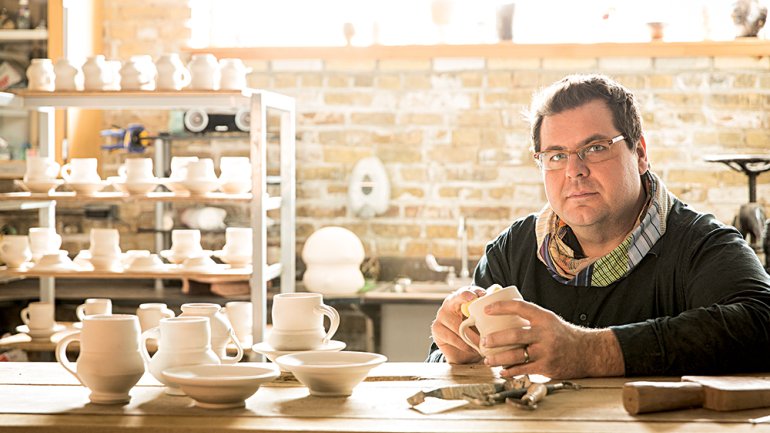Change Makers
Change Makers
Picture an artist. What do you see? Most of us imagine someone working alone in her studio, crafting objects to sell.
But there is another breed of artist who is out in the world, connecting with people, fostering experiences as much as creating objects. Social practice artists, the New York Times has written, “freely blur the lines” among object making, political activism, performance, community organizing, investigative journalism, and environmentalism, “creating a deeply participatory art.” For these artists, art is a means to an end – a better neighborhood, a better city, a better world.
Being any kind of artist takes guts. You make things that people may or may not like. You wrestle with self-doubt, dry spells, and loneliness.
And if you’re a social practice artist, you add another kind of risk to the equation. Social practitioners ride the edge of experimentation, taking chances in their interactions with strangers, all in the hope of making a difference.
This issue is devoted to art that makes a difference. And, we discovered as we put it together, the people who’ve committed themselves to this art-based activism are made of sturdy stuff.
Michael Strand had the audacity to start the Misfit Cup Liberation Project, collecting crappy cups from strangers at public forums and replacing them with cups he’s thrown by hand. In the process, he asks people to share the stories of the cups they’re giving up. He doesn’t know what he (and the audience) will hear; one Estonian woman proffered her last government-issue cup from the Soviet occupation. Strand may get banal stories, he may get harrowing stories; it’s unpredictable, and he has to be brave enough to manage that.
Kenji Nakayama has similar nerve. While many of us look the other way when we see homeless people, he moves closer. Nakayama is an expert sign painter, and he replaces the dilapidated cardboard signs homeless people use to ask for money (or other earthly goods) with colorful, beautifully lettered signs. He and his project partner also interview the people they help, aiming to humanize them and bring their stories to life online. When Nakayama makes an overture to a homeless person, he doesn’t know whom he is dealing with or how he’ll be received. Managing that risk is part of his art.
Curators are taking bold steps into social practice, too. At the Society for Contemporary Craft in Pittsburgh, the staff knew staging a show about violence might trigger extreme emotional reactions. But they sought guidance from art therapists and other experts and did it anyway, encouraging show-goers to share their own experiences. “We have some very powerful, very personal, very difficult stories of personal violence that have been left behind,” says SCC director of exhibitions Kate Lydon.
Social practice is a growing field, with an expanding list of residencies, degree programs, and conferences. Why the surge? Maybe old-style activism – picket lines and speechifying – has lost some of its power. Maybe we have reached a kind of tipping point where public expectations of participation dovetail with an especially participatory approach to art. Maybe there is a new hunger for community, not only among artists but also among people in general. Whatever the reasons, a growing number of artists are rising to meet the challenge.




